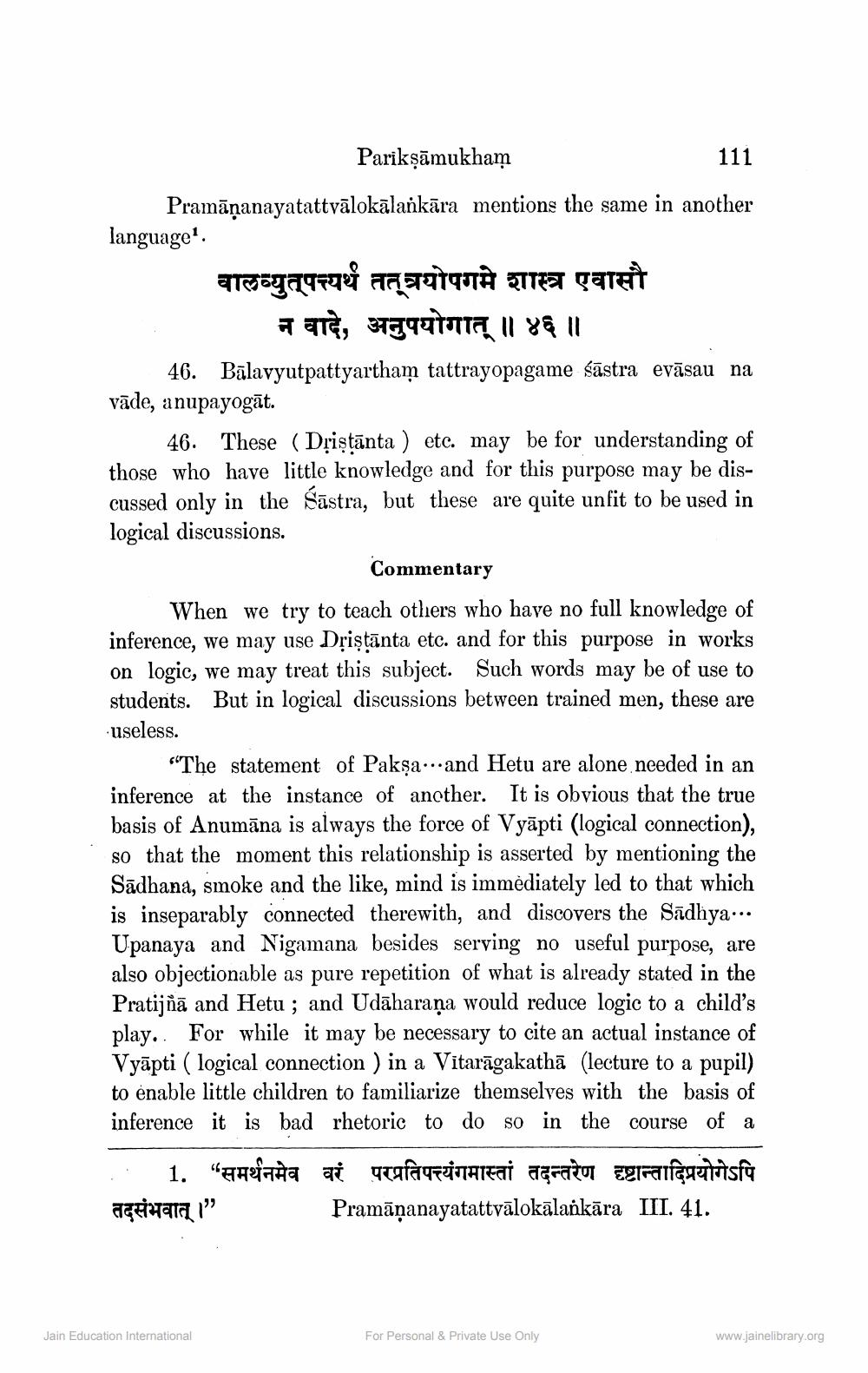________________
Parikşāmukham
111
Pramānanayatattvālokālankāra mentions the same in another language":
वालव्युत्पत्त्यर्थं तत्त्रयोपगमे शास्त्र एवासौ
न वादे, अनुपयोगात् ॥ ४६ ॥ 46. Būlavyutpattyartham tattrayopagame śāstra evāsau na vāde, anupayogāt.
46. These ( Dựistānta ) etc. may be for understanding of those who have little knowledge and for this purpose may be discussed only in the Sāstra, but these are quite unfit to be used in logical discussions.
Commentary When we try to teach others who have no full knowledge of inference, we may use Dșiştānta etc. and for this purpose in works on logic, we may treat this subject. Such words may be of use to students. But in logical discussions between trained men, these are useless.
“The statement of Pakşa..and Hetu are alone needed in an inference at the instance of another. It is obvious that the true basis of Anumāna is always the force of Vyāpti (logical connection), so that the moment this relationship is asserted by mentioning the Sādhana, smoke and the like, mind is immediately led to that which is inseparably connected therewith, and discovers the Sādhya... Upanaya and Nigamana besides serving no useful purpose, are also objectionable as pure repetition of what is already stated in the Pratijñā and Hetu ; and Udāharaṇa would reduce logic to a child's play. For while it may be necessary to cite an actual instance of Vyāpti ( logical connection ) in a Vitarāgakathā (lecture to a pupil) to enable little children to familiarize themselves with the basis of inference it is bad rhetoric to do so in the course of a .. 1. "F aha ai qrafagacitATEAT agrator Elfaigualisfa agiwara," Pramāṇanayatattvālokālaňkāra III. 41.
Jain Education International
For Personal & Private Use Only
www.jainelibrary.org




